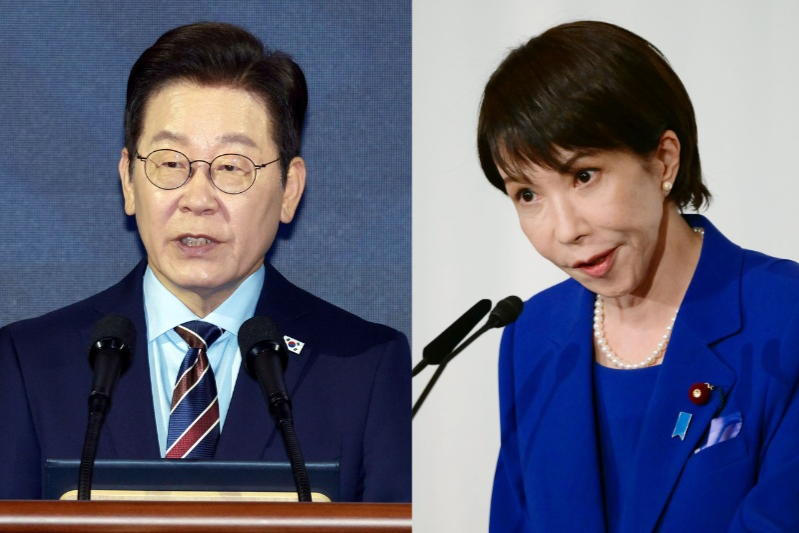Officials in Korea are paying keen attention to how Seoul-Tokyo relations will develop after a right-wing politician is set to lead Japan as its new prime minister.
Sanae Takaichi has expressed right-leaning views on historical and territorial issues, and concerns are rising that her hardline approach toward those matters could weigh on the relationship between the neighboring countries, which has been improving in recent years.
Takaichi, a former internal affairs minister, won in the leadership race of Japan’s ruling Liberal Democratic Party (LDP) and is expected to replace current Prime Minister Shigeru Ishiba after a parliamentary vote later this month.
She has previously criticized former leaders who voiced apologetic sentiments regarding Japan’s 1910-45 occupation of Korea and other Asian nations and supported politician visits to Yasukuni Shrine where Japan’s war dead — including Class-A war criminals — are honored. She also claimed Japan should set up structures on the Dokdo islets, which are under Korea’s effective control.
Based on these stances, Takaichi’s rise to the PM position has sparked concern here that she may take a harder line on the country’s wartime history to satisfy her conservative base, potentially straining bilateral ties.
However, Takaichi recently signaled a measured approach to these sensitive issues.
When asked by local media whether she would pay her respects at the shrine after taking office, she said she would “make an appropriate judgment,” suggesting a reserved stance. Japanese outlets have reported that she is considering refraining from visiting the shrine during the autumn festival at the end of next week, a notable shift from her earlier insistence on visiting as a lawmaker.
International relations experts also say there remains ample room for future-oriented cooperation between Seoul and Tokyo beyond historical disputes, predicting that the trilateral framework between Korea, Japan and the United States will likely remain intact.
Professor Lee Geun of Seoul National University’s Graduate School of International Studies said the reciprocal diplomatic visits initiated by President Lee Jae Myung and current Japanese Prime Minister Ishiba could continue under Takaichi’s leadership.
“Before the Korea-U.S. summit in late August, Lee visited Japan to highlight the importance of trilateral cooperation,” he said. “It wasn’t just a friendly meeting with Ishiba, but a formal diplomatic engagement reaffirming institutional ties.”

President Lee Jae Myung and then Japanese Prime Minister Shigeru Ishiba hold hands after their summit at the Nurimaru APEC House in Busan, Sept. 30. Yonhap
Professor Lee added that the continuation of local-level exchanges under the current framework reflects the president’s commitment to preventing the relationship from being derailed by historical controversies.
“Takaichi understands the strategic value of Korea-U.S.-Japan cooperation, so it’s unlikely she will intentionally destabilize relations over history issues,” he said.
At the same time, the professor emphasized that both countries must remain “future-oriented” and avoid letting historical disputes reemerge as diplomatic flashpoints. While critical comments may arise from opposition parties or within the Korean foreign ministry, he predicted that the top-level relationship between the two governments would remain constructive and focused on pragmatic cooperation.
The Korean president is expected to hold his first summit with Takaichi on the sidelines of the Asia-Pacific Economic Cooperation Economic Leaders’ Meeting, which will be held in Gyeongju, North Gyeongsang Province, Oct. 31 and Nov. 1.
Meanwhile, U.S. President Donald Trump is reportedly planning to attend the ASEAN Summit in Malaysia’s Kuala Lumpur and will visit Japan from Oct. 27 to 29, followed by a one- or two-day stay in Korea.


AloJapan.com